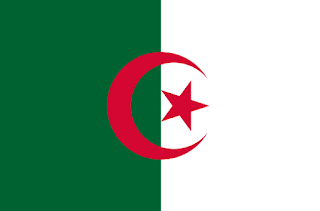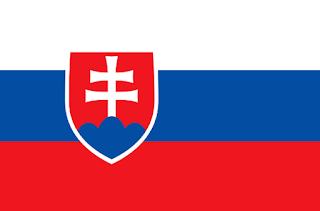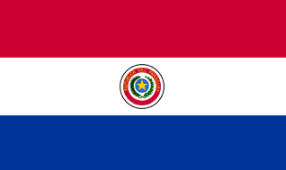FACTS ABOUT UZBEKISTAN
AMAZING
FACTS ABOUT UZBEKISTAN
1.
Tashkent is the capital city of
Uzbekistan.
2.
The total population of Uzbekistan is 29,748,859.
3.
The natives of Uzbekistan are called
Uzbeks.
4.
The Uzbekistan Som (UZS) is official
currency of Uzbekistan.
5.
Uzbekistan shares a border with
Kazakhstan, Tajikistan, Kyrgyzstan, Afghanistan and Turkmenistan.
6.
Once part of the ancient Persian Empire,
what is now known as Uzbekistan was conquered in the fourth century B.C. by
Alexander the Great.
7.
During the eighth century invading Arab
forces dominated the area and converted the nomadic Turkic tribes living there
to Islam.
8.
In the thirteenth century, Ghengis Khan
and the Mongols seized the region from the Seljuk Turks.
9.
Next, the territory became part of the
empire of Tamerlane the Great and his successors. This lasted into the
sixteenth century.
10.
In the early sixteenth century the
Uzbeks invaded and merged with the other inhabitants of the territory that
today is Uzbekistan, breaking it into the separate principalities of the
khanates (city-states) Khiva, Kokand and Bukhara.
11.
The city-states resisted fiercely but
were conquered by the Russian expansion into the area in the mid-19th century.
12.
In 2016 Uzbekistan held its first
election since 1991.
13.
Uzbekistan is Central Asia’s most
populous country and the majority live in rural areas.
14.
The economic trend is for urban
residents to earn twice as much as their rural counterparts.
15.
Though the Uzbekistan economy grew eight
percent in 2015, it is still one of the least developed and poorest countries
in Asia.
16.
The majority of the country’s citizens
are ethnic Uzbeks who speak Uzbek, the official language. Russian is the second
most widely spoken language. Sunni Muslims make up 88 percent of the population
though they are secular and not religious Muslims.
17.
The country is the world’s
second-largest cotton exporter and fifth largest producer.
18.
Palov or Plov is the national dish.
19.
An Uzbek master chef is held to be able
to cook enough palov/plov in one caldron to serve a thousand men.
20.
Lepioshka (bread) is never laid upside
down (it brings bad luck) nor placed on the ground, even if it’s safely in a
bag.
21.
Traditional Uzbek bread, known as ‘obi
non’ or simply ‘non’, is flat and round and always torn by hand, never sliced
with a knife. It is also never thrown out.
22.
Following an ancient tradition, a family
member must take a bite from a small piece of Uzbek bread before departing on a
journey. The rest of that bread is kept hidden or buried until the traveler
comes home.
23.
Handshakes are only acceptable as a
greeting between two men. An Uzbek woman is greeted by bowing to her with your
right hand placed over your heart.
24.
In Uzbek tradition, the most respected
guest is seated the farthest from the entrance to the house.
25.
Respect for the elderly is paramount. An
Uzbek never insults nor yells at his parents.
26.
The Uzbek traditional dances are
distinguished by a soft smoothness and expressiveness of movement, either in
place or in a circle.
27.
Applied arts include painted pottery
influenced by the many cultures that have lived in the country and luscious,
colorful, ornamental embroidery. A fine embroidery with threads made of gold is
still practiced in the province of Bukhara.
28.
Soccer and tennis are the country’s most
popular sports. Cycling, boxing, wrestling, and gymnastics are also highly
regarded. Uzbekistan athletes have done well in the Olympics in these sports.
Kurash is their native martial art form.
29.
The Nuratau-Kyzylkum Biospheric Reserve
will soon be included in the UNESCO global list of such reserves.
30.
Uzbekistan features three health and
recreation complexes for relaxation: Chimgan, Charvak and Beldersay. Visas are
required for all tourists apart from passport holders of CIS countries (The
Commonwealth of Independent States.)
31.
The Tashkent region, including the
capital city of Tashkent, is the economic and political center of the nation.
Here you will find the international airport, bus service, and Tashkent’s
beautiful metro system.
32.
Metro Tashkent’s three stations feature
marble ceilings and pillars, engraved metal, and beautiful chandeliers. Not
only does it have some of the most beautiful stations in the world, this metro
is the biggest system in Central Asia.
33.
The Aral Sea was once the Earth’s fourth
largest inland sea. After the Soviets depleted its water supply to irrigate the
cotton fields in the 1960s and extensively used chemical pesticides and
fertilizers, it has shrunk to half its former area and decreased by threefold
in volume.
34.
Now there is a shortage of water in
Uzbekistan, with underground water and reservoirs serving the needs for plant
irrigation. Certain rivers are now half dry. The drying of the Aral Sea has
ravaged the surrounding land with disease and agricultural devastation.
35.
An island in the Aral Sea named
Vozrozhdeniye was a secret biological weapons test site for the Soviets during
their era. In 1988, the Soviets buried evidence on the island, which today is
contaminated with live anthrax and other deadly poisons.
36.
The country mines 160 million ounces of
gold annually and has the fourth largest deposits of gold in the world. Its
Muruntau gold mine is the largest open pit gold mine in the world, located on a
site where turquoise was previously mined from ancient times.
37.
Be aware that laws are strictly enforced
in Uzbekistan, punishments are severe, and it is not wise to get snarky with
the police. It is illegal to gamble, possess and use drugs, and use tobacco and
alcohol if you are under 20.
38.
Be aware some photography upsets the
authorities. Don’t photograph government or public buildings and transportation
hubs.
39.
Uzbekistan Exports: energy products,
cotton, gold, mineral fertilizers, ferrous and nonferrous metals, textiles,
foodstuffs, machinery and automobiles.
40.
Uzbekistan Exports: machinery and
equipment, foodstuffs, chemicals, ferrous and nonferrous metals.
41.
The internet country code for Uzbekistan
is .uz.




Comments
Post a Comment